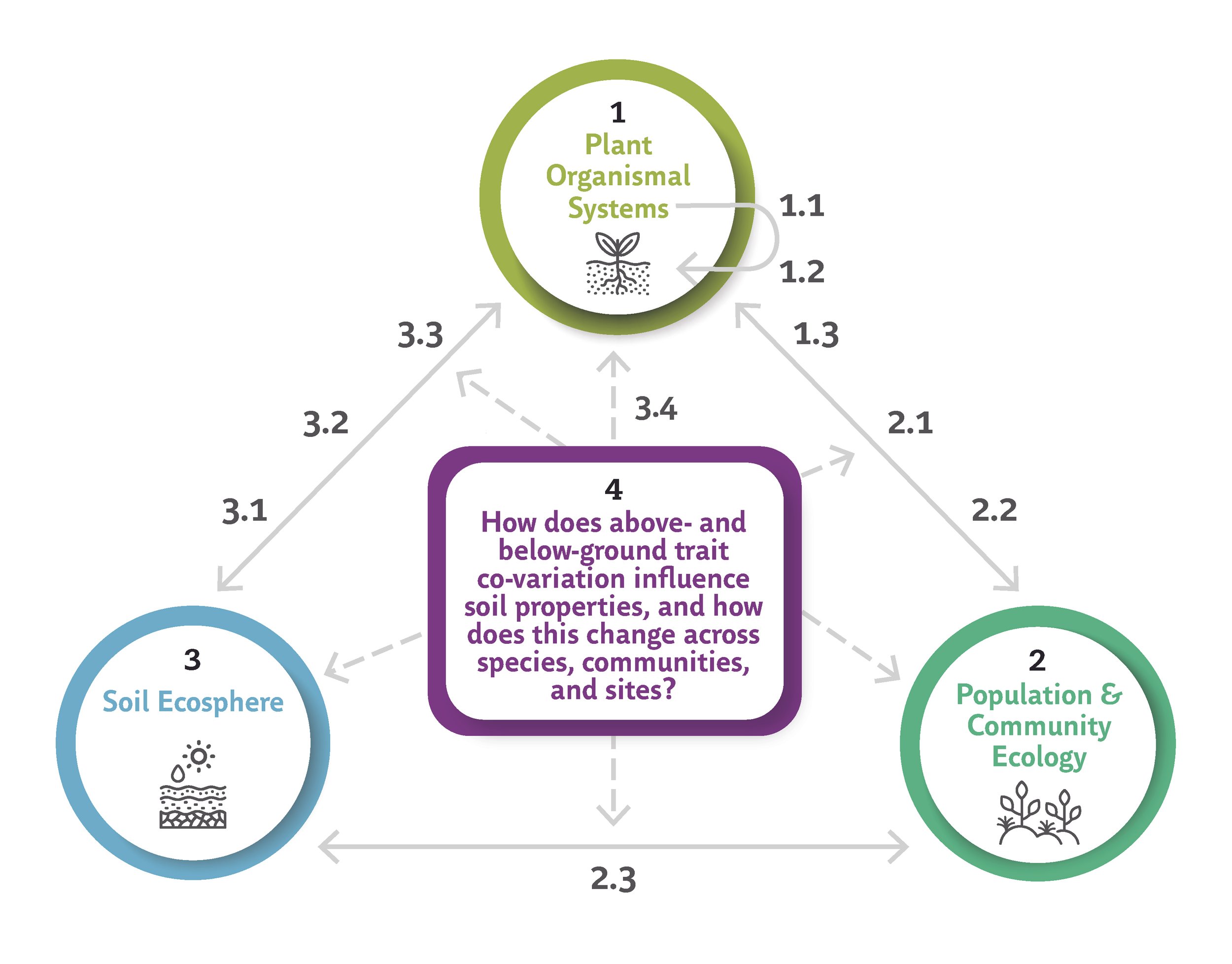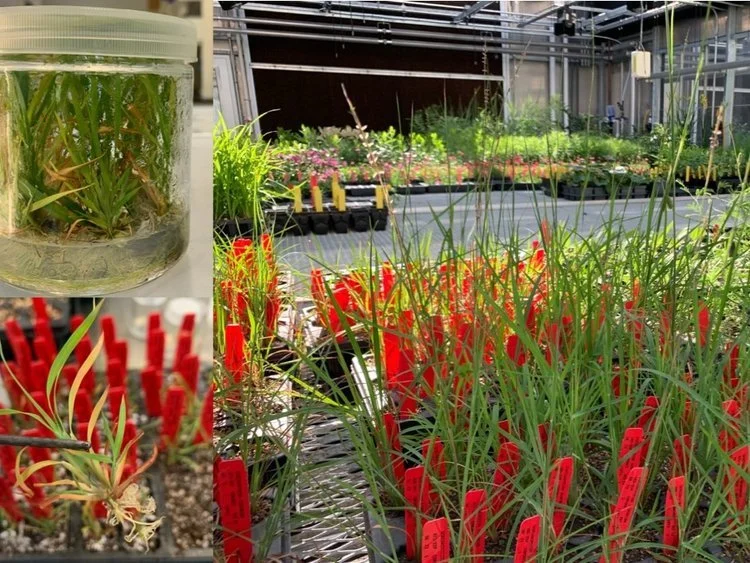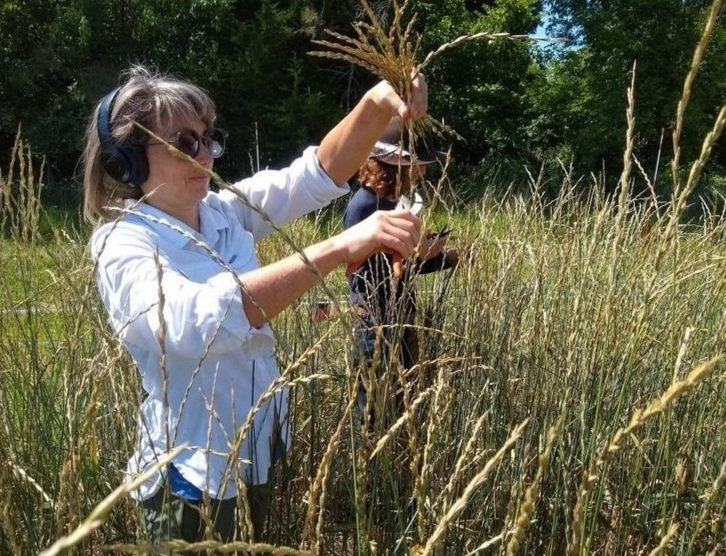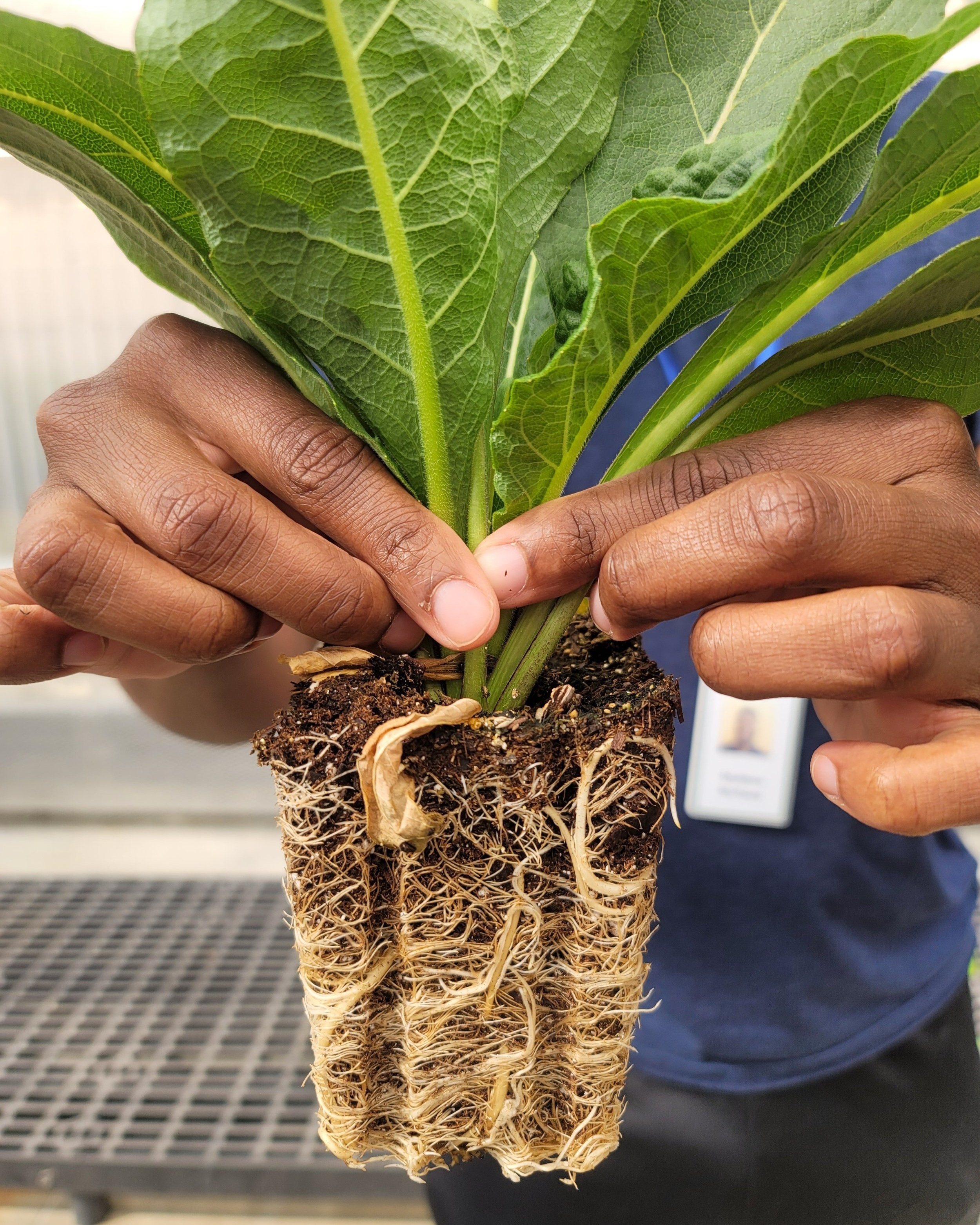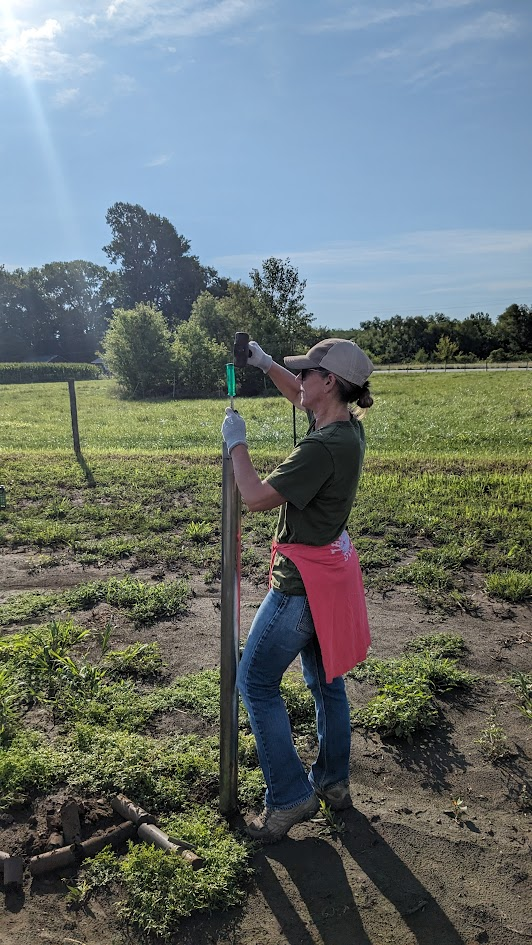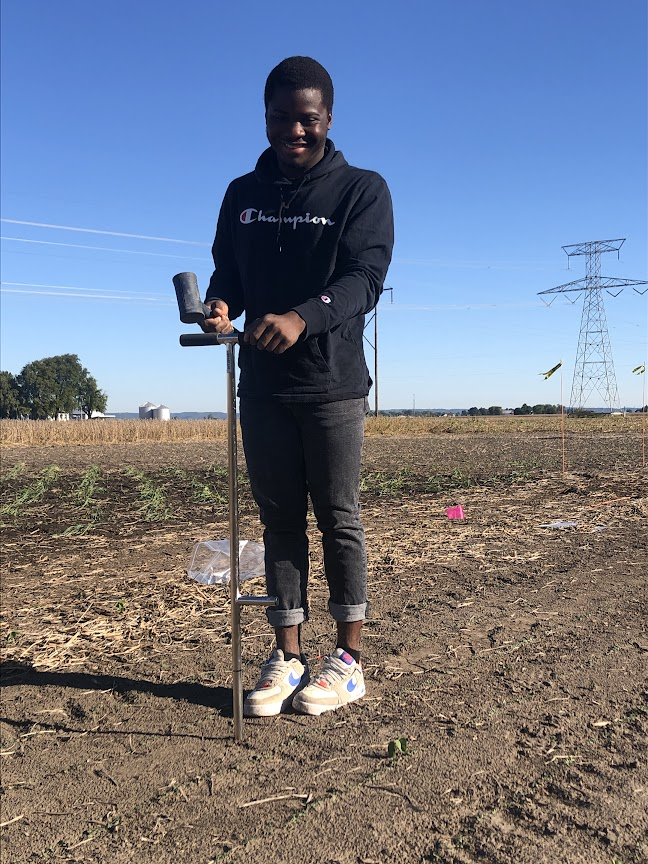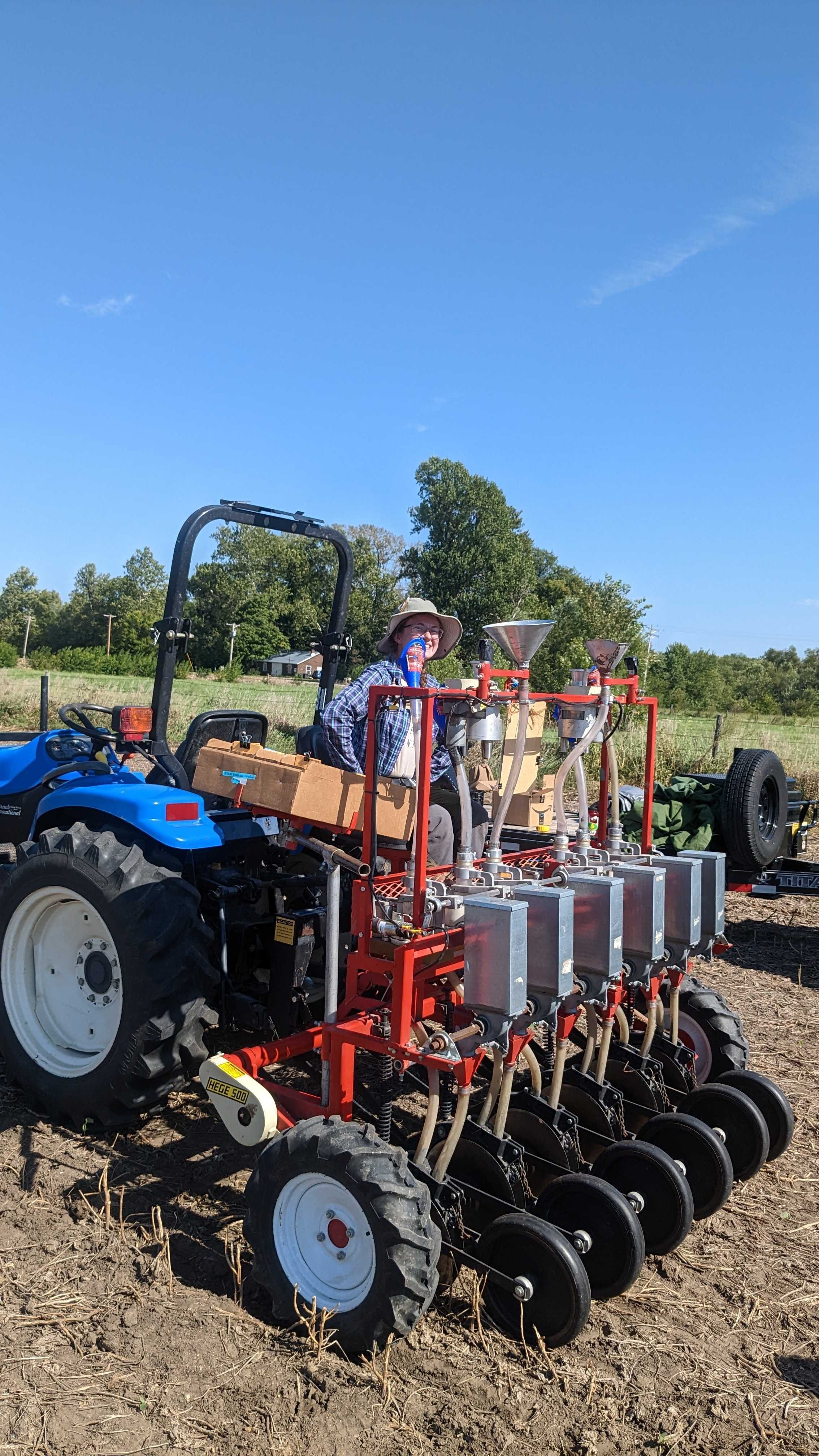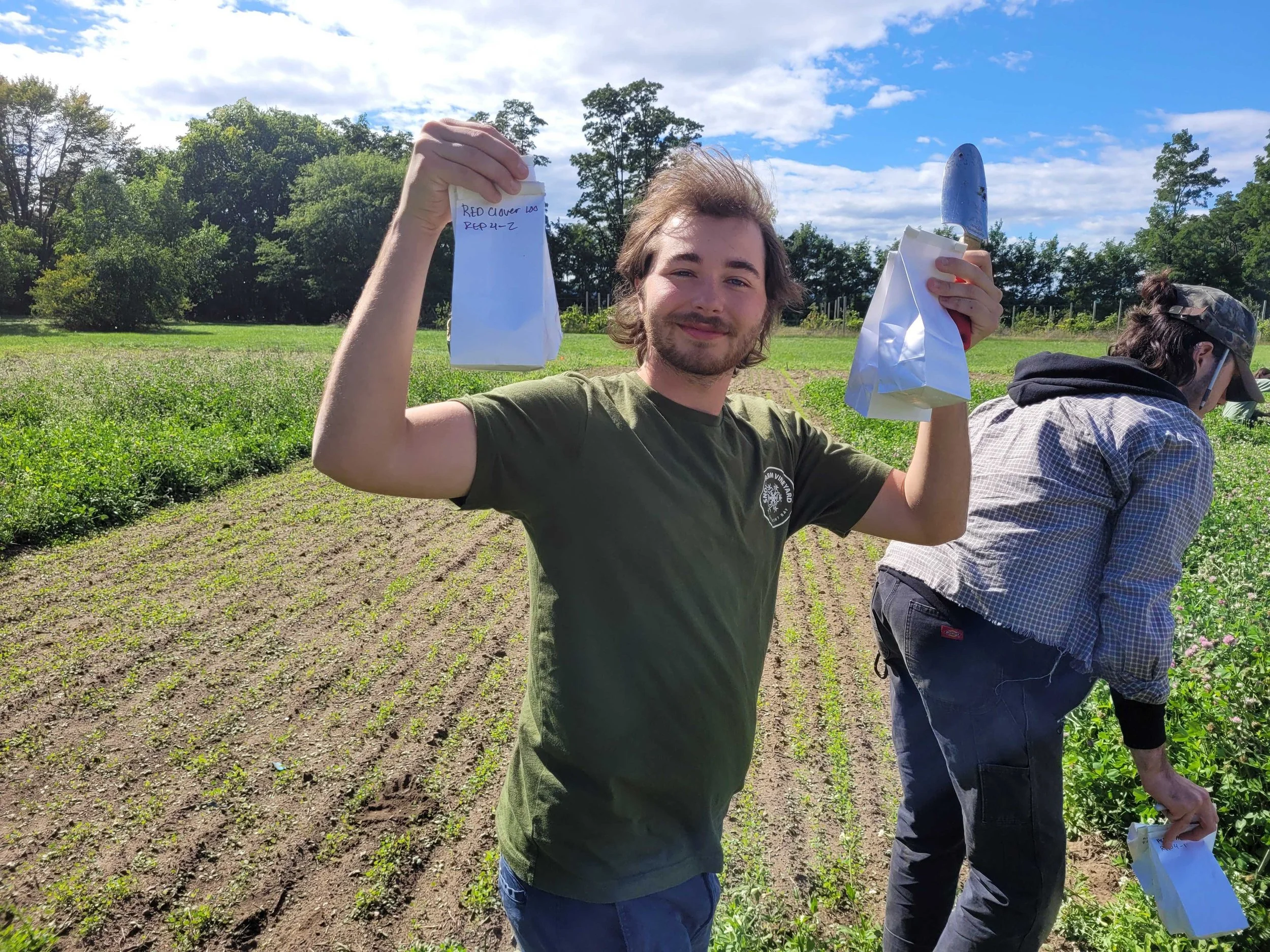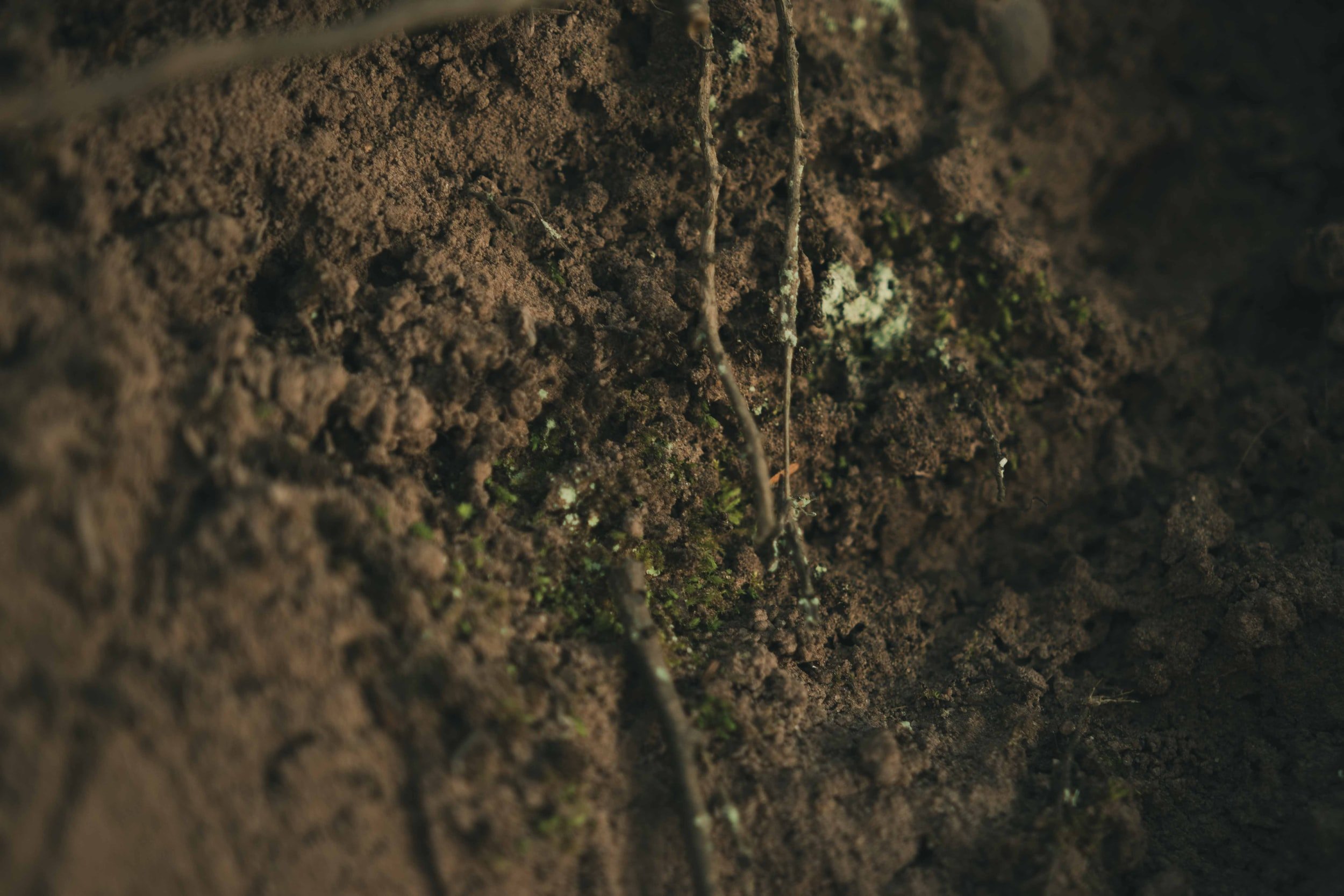
Through root systems, plants connect above and belowground worlds, yet we lack the understanding of how these traits are governed
We aim to characterize how above and belowground traits vary across individuals, populations, species, plant communities, and sites. This information can be applied to accelerate breeding efforts (for perennial crops) and selection of suitably biodiverse germplasm (of wild species) to use in ecologically and functionally appropriate efforts to restore natural and agricultural ecosystems.
Foundational projects
Our projects pertain to three main themes that answer our overarching questions:
Plant Organismal Systems (1.1, 1.2, and 1.3)
Population and Community Ecology (2.1, 2.2, and 2.3)
Soil Ecosphere (3.1, 3.2, 3.3, and 3.4)
Project 1.1 - Root and shoot covariation
Is covariation between aboveground (shoot) and belowground (root) traits consistent across species? We leverage an existing experiment at Shaw Nature Reserve (Gray Summit, MO) to quantify above and belowground trait covariation in 11 perennial, herbaceous species and develop a new iPhone-based app for digital aboveground phenotyping.
Lead - Molly Hanlon (DDPSC) and Allison Miller (DDPSC)
Location - Shaw Nature Reserve (Gray Summit, MO).
Project 1.2 - Genome-Wide association study (gwas)
What is the genetic basis of root/shoot covariation? With seed derived in part from Project 1.1, we are establishing genome-wide association study (GWAS) populations. Root growth data is quantified over time with a new in field root phenotyping approach paired with shoot phenotyping and genetic data.
Lead - Stella Woeltjen (DDPSC)
Locations - Shaw Nature Reserve (Gray Summit, MO) and Fischer Farm (St. Charles, MO)
Project 1.3 - Population covariation
How is covariation in root and shoot traits distributed among populations within species? Researchers at the Chicago Botanic Garden are collecting wild populations of three species used in Projects 1.1, 1.2, and 2.1. Trait data will be collected on multiple lines of micropropagated plants to assess variation at each organizational level (clone, population, species).
Leads - Andrea Kramer (CBG) and Jacob Zeldin (CBG)
Location: Chicago Botanic Garden (Glencoe, IL)
Project 2.1 - Biodiversity-productivity relationships
Can above and belowground phenotypic variation predict coexistence, biodiversity, and plant community productivity? An existing NSF Dimensions of Biodiversity experiment in Lawrence, KS, houses communities of 1, 2, 3, or 6 of 18 perennial, herbaceous species representing our three focal plant families. We are collecting root and shoot trait data to link plant traits with community-level properties.
Lead - Jim Bever
Location - University of Kansas Field Station (Jefferson County, KS)
Project 2.2 - trait and competitive relationships
How does intraspecific variation in above and belowground traits modulate interspecific competitive relationships and biodiversity ecosystem function (BEF) relationships? Building on Project 1.3, are quantifying how intraspecific functional trait variation influences interspecific interactions in experimental polycultures.
Lead - Alicia Foxx
Location - Chicago Botanic Garden (Glencoe, IL)
Project 2.3 - traits in mono vs bicultures
Do root/shoot plant traits vary in monocultures vs. polycultures of perennial herbaceous species, and does this predict production? Moving from natural to agricultural systems, we established a foundational multi-site experiment with emerging perennial crops planted in mono and polycultures across precipitation and latitudinal gradients. Comprehensive above and belowground phenotyping will be conducted over multiple years.
Lead - Tom McKenna (KU)
Locations - University of Kansas (Lawrence, KS), University of Vermont (Burlington, VT), Shaw Nature Reserve (Gray Summit, MO), Fischer Farm (St. Charles, MO), Chicago Botanic Garden (Mettawa, IL), University of Missouri (Novelty, MO), The Land Institute (Salina, KS)
Project 3.1 - effects of soil type
How does soil type influence root/shoot variation and covariation? We hope to determine which belowground soil processes influence plant communities. Additionally, we will test whether plant species and functional biodiversity modulates belowground processes. We are collecting data on soil physicochemical properties such as mycorrhizal productivity, carbon sequestration, nitrogen cycling, and microbiome composition and function for projects 1.2, 2.2, and 2.3.
Lead - Louise Egerton-Warburton (CBG)
Location - Chicago Botanic Garden (Mettawa, IL)
Project 3.2 - the rhizosphere
Does variation in root/shoot traits within wild plant species predictably shape root microbiomes? Analyses of rhizosphere microbes of Project 1.1 plants will determine host-specific effects on microbiome biodiversity and composition.
Lead - Maggie Wagner (KU)
Locations - University of Kansas (Lawrence, KS) and Shaw Nature Reserve (Gray Summit, MO)
Project 3.3 - the microbiome
How do soil/root microbiomes, including those sensitive to plant community biodiversity, impact host above and belowground traits? Inoculations from project 2.1 are being used in greenhouse experiments to assess root and shoot trait responses to plant community biodiversity effects on microbiomes.
Lead - Ben Sikes (KU)
Location - University of Kansas (Lawrence, KS)
Project 3.4 - soil ecosphere
How do monocultures and polycultures of perennial crops impact soil abiotic properties and soil community structure? How do soil communities differentiated by crop identity and diversity influence crop root/shoot traits? We are quantifying soil structure and composition data and microbial biodiversity in replicated mono and polyculture crop plots at the beginning and end of Project 2.3.
Lead - Laura van der Pol (TLI)
Locations - University of Kansas (Lawrence, KS), University of Vermont (Burlington, VT), Shaw Nature Reserve (Gray Summit, MO), Fischer Farm (St. Charles, MO), Chicago Botanic Garden (Mettawa, IL), University of Missouri (Novelty, MO), The Land Institute (Salina, KS)


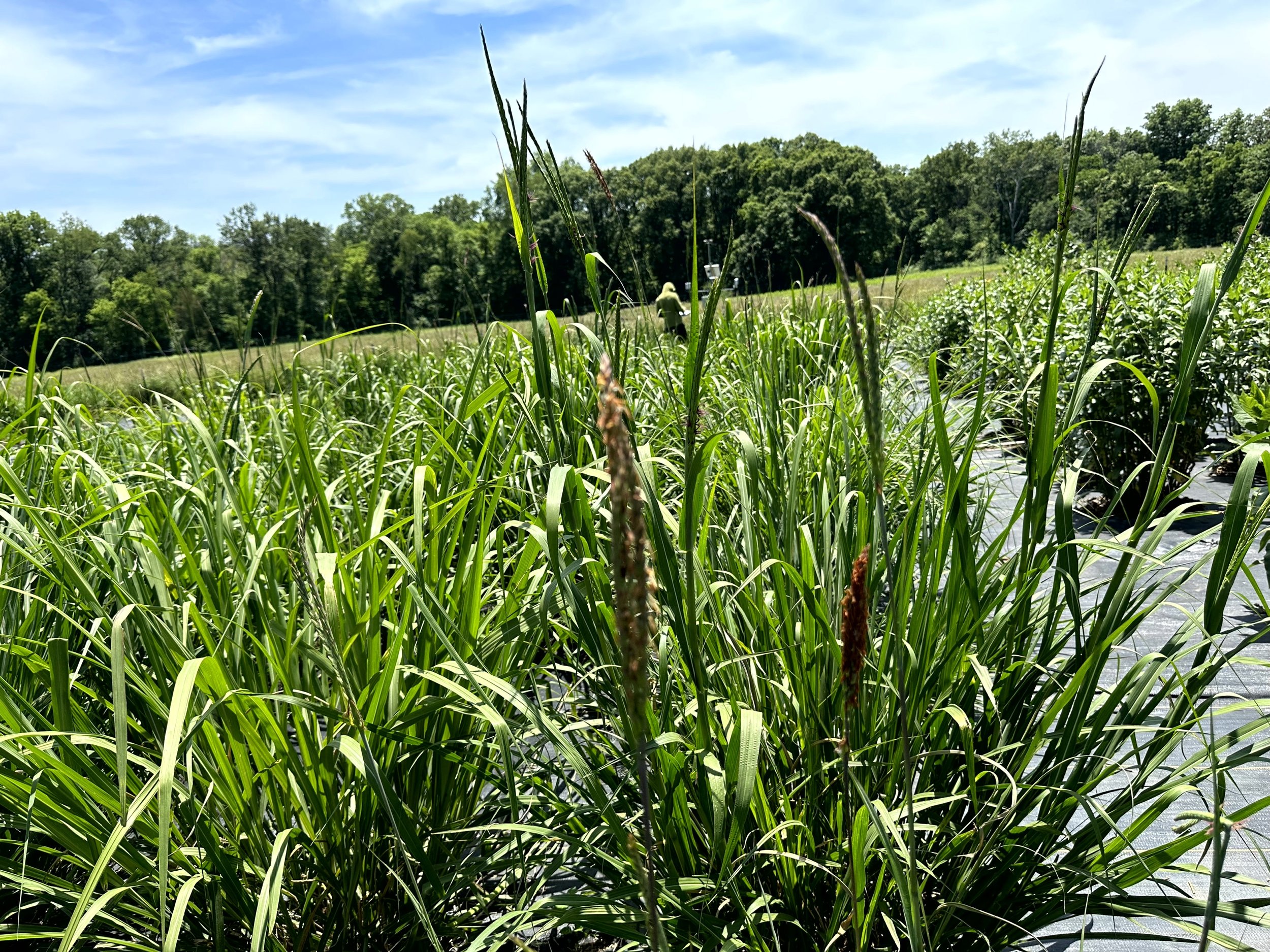
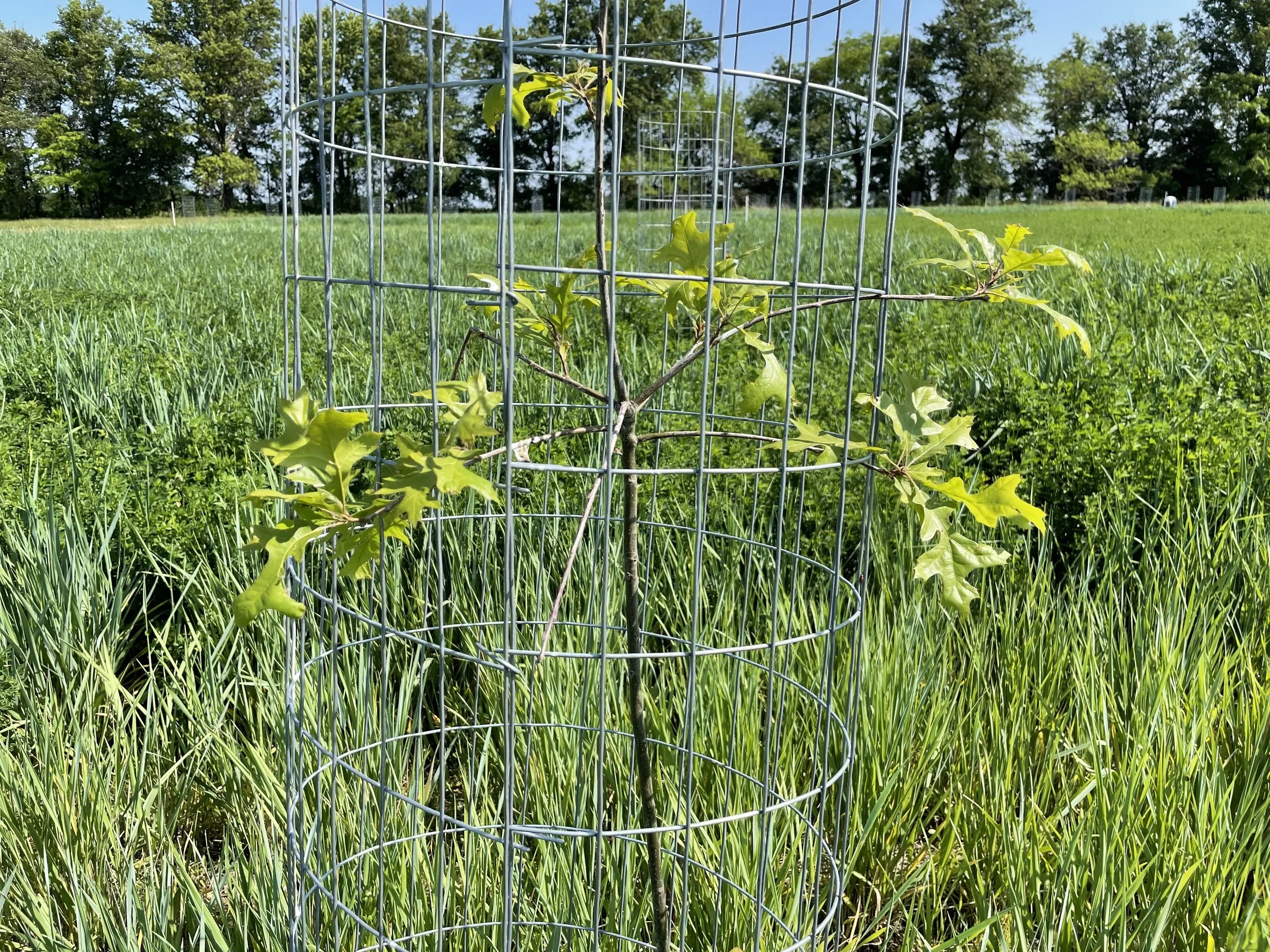


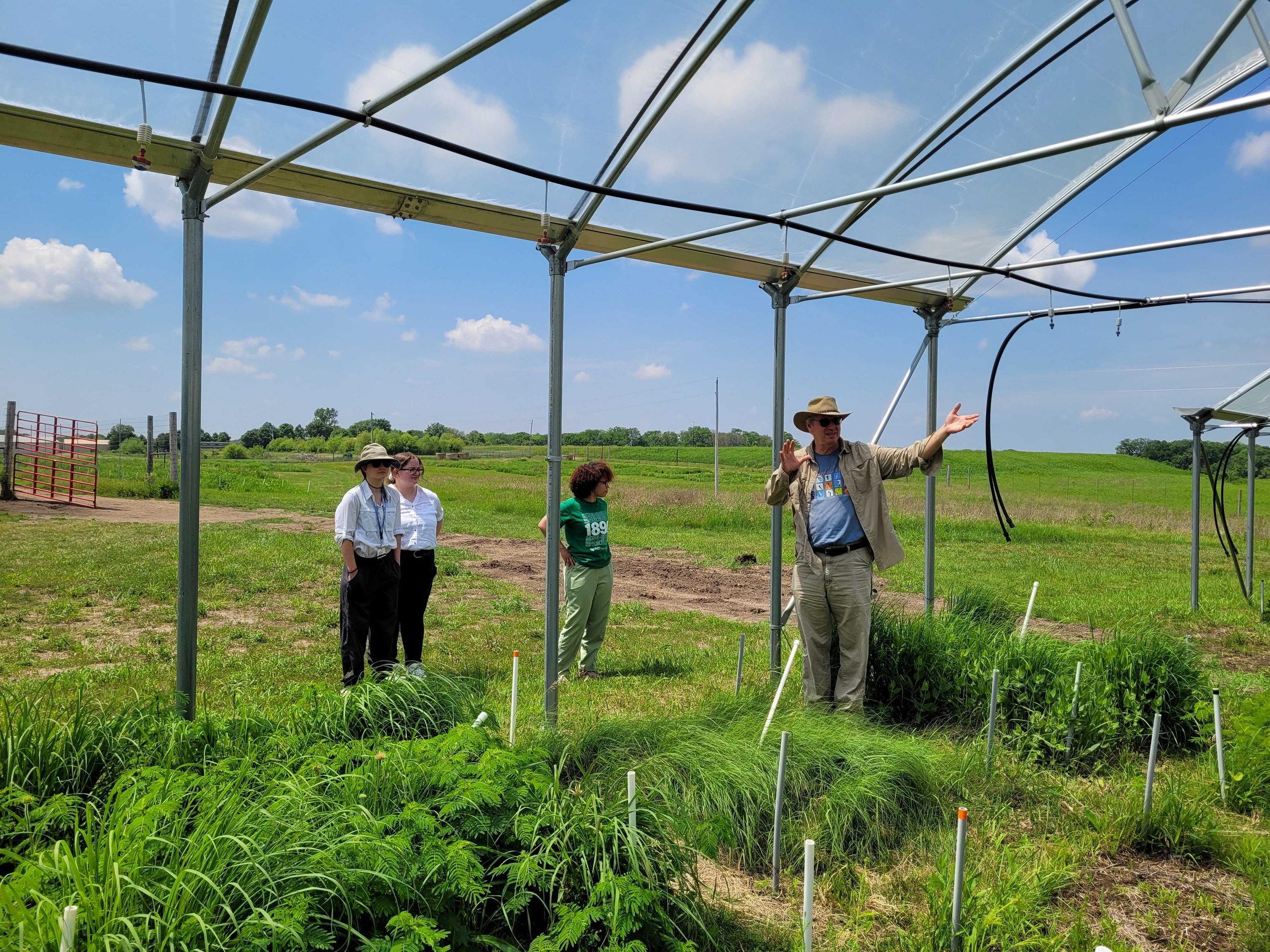

Emerging projects
In addition to the projects described above, our team is finding new questions to investigate to build off of previous findings. Scroll through the images to learn more about our emerging projects.

